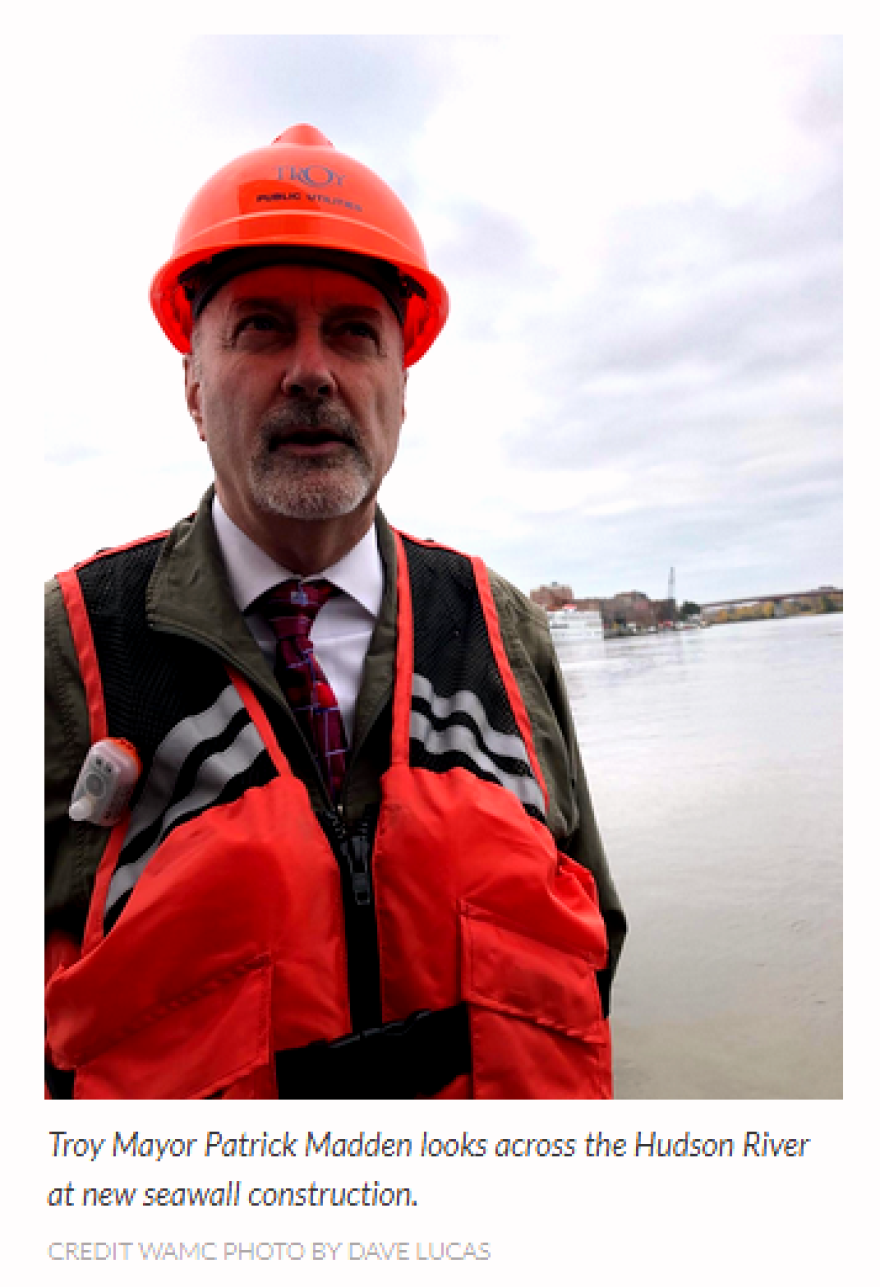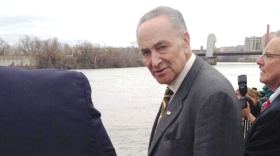Troy's seawall project is nearing completion, but officials say that's just the beginning of creating a vibrant waterfront community.
In April 2014, then-Mayor Lou Rosamilia said Troy had a huge problem: the Hudson River seawall, downtown's first defense against flooding, was rapidly deteriorating.
Rosamilia noted that the first report that mentioned the seawall needed attention came out during the late 1970s. It said the seawall had perhaps another 25 years left...

New York U.S. Senator Charles Schumer got involved and in 2018 was able to secure more than $14 million in Federal Emergency Management Agency funding to upgrade the seawall. The project was expected to take two years to complete at a total cost of $24 million. Troy would finance the balance. To date the restoration has cost just over $26 million. On Wednesday city officials invited members of the media on a barge tour to view the progress.
Mayor Patrick Madden: "We're utilizing this riverfront. It's a great asset and we're tapping into it. I think if you think about other cities that you've been to that are 'neat,' you know, whether it's Austin or Savannah, you know they've all taken advantage of their riverfront, and they're quaint areas, they're tourist attractions, and for the residents it's a great quality of life issue."
The refurbished seawall has been designed to complement other private and public projects that officials believe will attract more development and lure tourists to the waterfront.
Section by section the seawall, built in 1922, has been repaired and hardened. When work is complete it is expected to stand for the next 80 years or more.
Jan Peterson works for Clough-Harbor consulting and serves as resident engineer for the city. "We have active divers in the river, completing underwater void filling with concrete. It's a class g concrete New York State DOT mix, it's called a tremie pour, specially-designed concrete to go under the water. We have fixed steel forms and rebar installed and they pump it in with a pump truck and a steel tube called a tremie tube."
Peterson says new sidewalks, a park area, new drainage, parking lots, LED lighting, a marina, and several other embellishments are being built. "The marina itself is gonna have shower facilities, diesel and hi-test gasoline availabilities. A pumpout facility for the boats, These boats are gonna have 30 and 50 amp hookups down on the docks. And they all stage here before they go up into the locks and either go up ultimately into Canada or into the Great Lakes system. They can spend a week here if they want, really, they pay by the foot by the slip per day."
Peterson says much of the underwater work has been completed. "We are probably 90 percent done with that underwater work. We have over 500 cubic yards of underwater concrete that's been installed in the last two years, to fill these massive holes at the bottom where the old seawall meets the bedrock. We have the new wall out in front, the old wall is sitting on top of wooden timbers, wooden cribbing. This used to be dry land and they widened it out for all the industry down through here. So the new wall is going out in front to stabilize the old wall, and areas where the old wall is sitting on bedrock, we're just filling voids."

The refurbished seawall has been designed to complement other private and public projects that officials believe will attract more development and lure tourists to the waterfront. Madden, a Democrat seeking reelection, says the area was long neglected. "I can remember a point in tile when this section of River Street had one going concern on it, was the Salvation Army. Now you can see how that's spreading north and the boundaries of the downtown are growing. And so it's providing more opportunities for people to come in. We have the development on Green Island, Starbuck Island, 287 apartments over there. They're gonna be coming over here for dining options, for shopping options, or to visit a bar. So this is accommodating all of that growth. We have a new hotel here, 120 rooms, these people are coming in, they wanna go out at night, they're visiting our restaurants and bars as well. So this is tying all of that together. And it will continue, you know, after I'm gone, it will continue, up through North Central, and you know we're hell-bent on taking advantage of this riverfront."
If the weather co-operates, the seawall project is expected to be completed by the end of the year, no later than spring if there are delays.



















